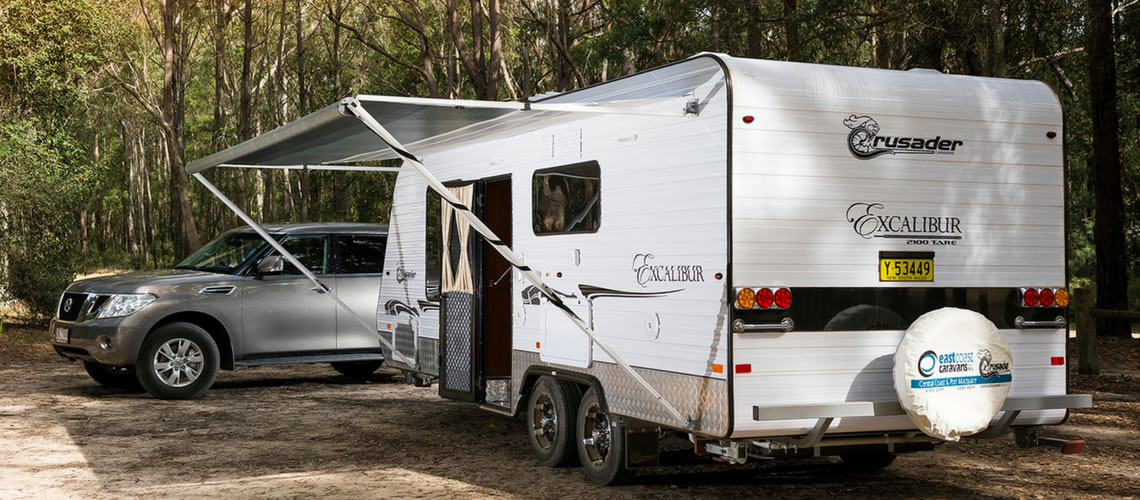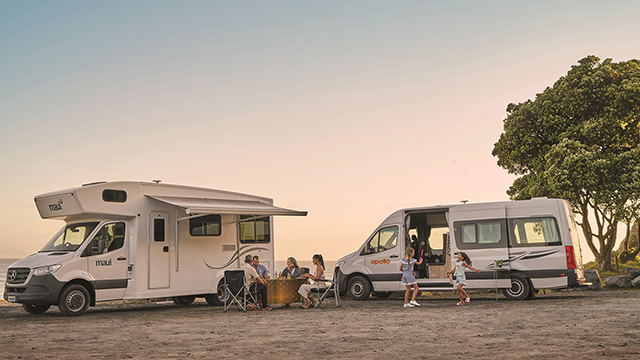Have you ever had the caravan or trailer you were towing start to sway? It can be a scary phenomenon, especially because it usually happens unexpectedly and for no apparent reason.
Truth is, any caravanner can encounter sway, no matter how experienced you are, how well set-up your rig is or how carefully you follow conventional wisdom to reduce it. There’s so much literature, advice, hints and tips floating around the caravanning community, telling us how to reduce the chance of it happening, and even plenty of online videos involving treadmills and model caravans, showing what happens if we load them incorrectly.
When you think of a car towing a caravan (which is just dead weight on ball bearings), it seems like it should just follow the car directly in front of it, wherever it goes. But why doesn’t it always work like that? To understand the phenomenon, we have to delve into the world of physics, thermodynamics and grey nomad obsession.
Firstly, let’s look at what exactly a caravan is doing when it’s swaying or snaking behind the tow vehicle. If we view it from above, the snaking motion shows us one important thing: the caravan’s wheels are actually travelling further than the car’s. Assuming the car is moving in a mostly straight line, the caravan behind it is winding down the road and the line each caravan wheel takes is longer than those of the car’s it’s following. Therefore, during a sway, the caravan is travelling faster than the car. You could even say that a swaying caravan is trying to overtake you!
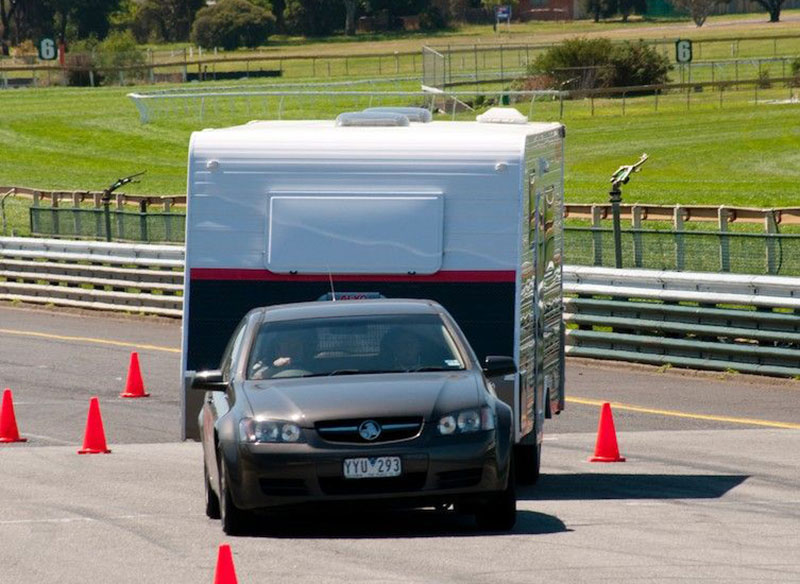
How is this possible?
Understandably, we think of a caravan as a powerless vehicle, which it is. But power isn’t what makes things move – it’s just a measure of how fast we can create energy or move things. Energy is what makes things move and a caravan, in the right situation, has plenty of that.
If we want to keep it simple (which we do), let’s look at potential energy. Potential energy is the energy an object possesses due to its position relative to another object. In the physics world, it’s measured as mass x height x gravity. If we look at two balls, sitting 1cm above ground, they have a small amount of potential energy, because if they fall, they can’t fall far. Held above your head, their energy is far higher, because they have a long way to fall. Then if we compare the two balls, the one that weighs more has more energy again. A 3000kg caravan at the top of the hill, then, has a lot of potential energy.
A caravan can also be given energy by the car towing it. Kinetic energy, as we know it, is the energy possessed by something due to the relationship between its mass and velocity. However, those energies acting on a caravan will only make it go in a straight line, and at the same speed as the car or 4WD towing it.
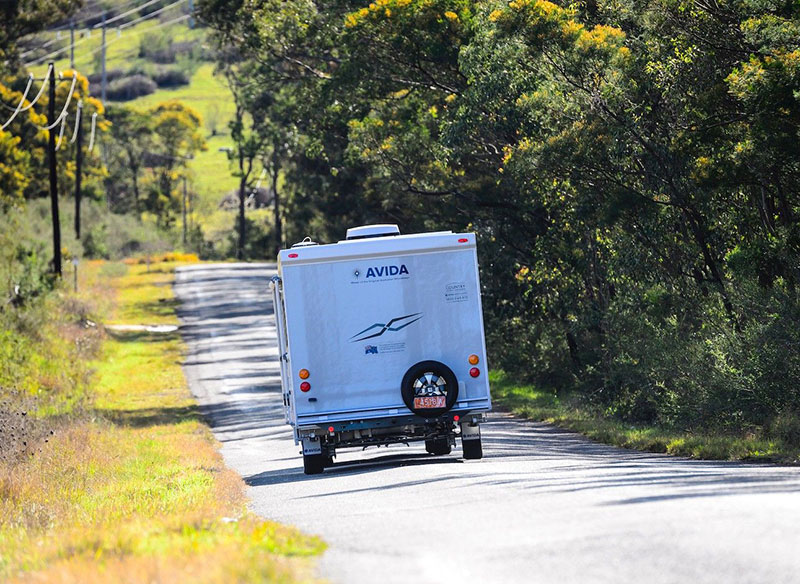
But what if the caravan is given more energy from another source? Or energy is taken from the car faster than it’s taken from the caravan. Really, that’s the only way a caravan can end up travelling faster than the car towing it. A big gust of wind on the side or back the caravan, such as from the draft of a passing truck, will act as if on a boat sail and add energy. Even the deceleration of the car will change the energy of the caravan relative to it, so the two push together like an accordion (which, incidentally, is also the motion that trips mechanical override brakes). It could also just be the result of human error, like not having the electric brake controller set up correctly.
All of this is totally fine if both the car and caravan stay on the same course – the caravan’s extra energy will push the car straight forward, and the car will use gearing or brakes to slow the whole combination down. But what if the caravan doesn’t push the car straight forward?
When it pushes to the left or right
In most cases, nothing much will happen – the mass of the car, its grip on the road and its suspension will all combine to absorb the energy, turn it into heat, and you’ll pull up to camp that night, none the wiser. But, sometimes, the push will be enough to unbalance the connection between car and caravan, just a little. So how does it escalate?
You have to remember that anything in motion wants to keep moving in a straight line and will resist any change to that direction of movement. We know it as inertia. A caravan that’s swaying has been forced to move both sideways and forwards at the same time and, as long as that caravan (usually by virtue of its mass, position or sail area) has more energy compared to the car, it will continue to do that. What makes it worse, is the further the caravan moves sideways, the less there is in front of it to slow it down. Then it whips back to the other side, taking all that energy with it, making the situation worse.
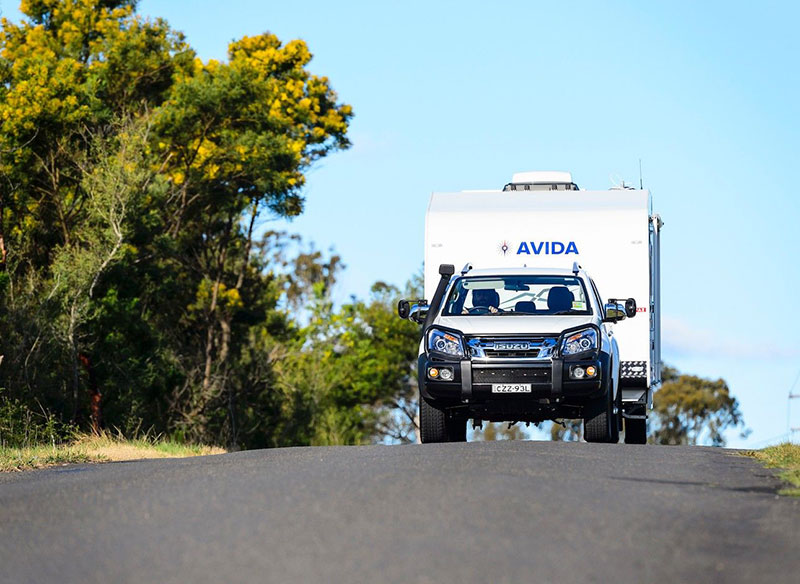
How do you stop it?
What you can’t do is give the car more energy through acceleration. That will take too long and your car or 4WD simply isn’t powerful enough. Most likely, you will just crash faster. Instead, you must take the energy out of the caravan and the most effective way to do that is to apply the caravan’s brakes. This is exactly the principle behind caravan stability systems.
Very simply, these systems activate the brakes of the caravan without the driver needing to do anything, and faster than they could if they were going to. It will keep the brakes on until it recognises the caravan is no longer swaying. As complicated as the circumstances actually are to get a caravan to sway, it’s remarkably simple to stop it.
The next time your caravan starts to sway, remember that it has started to travel faster than your car. The best way to counteract it is using the override on your electric brake controller, or having a stability control system fitted. This will easily slow your caravan down before everything gets out of control.









